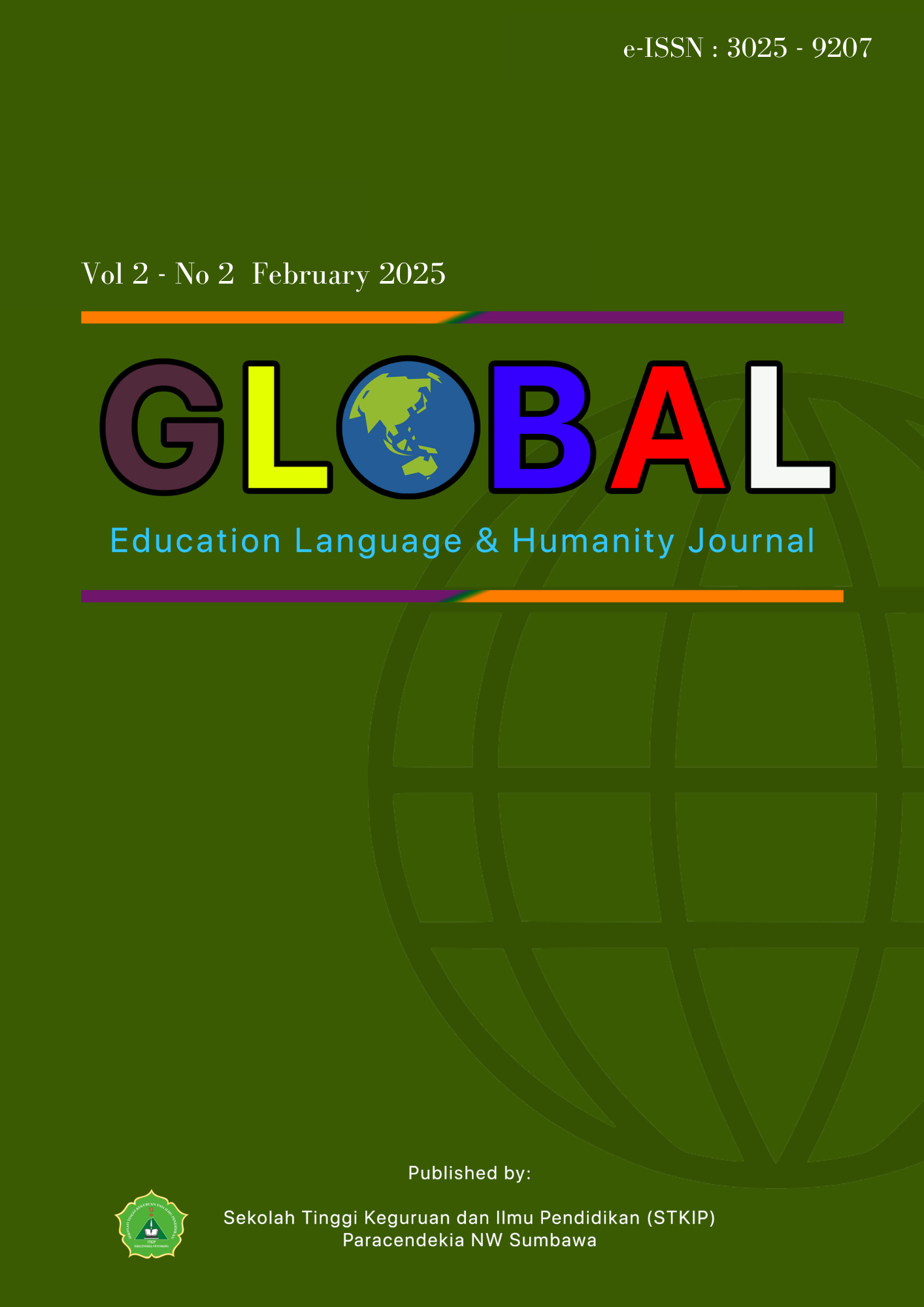SWEAR WORD TYPOLOGY AND FUNCTIONS IN SASAK TEENAGERS’ SPEECH IN MEKARSARI SUB-VILLAGE OF SUMBAWA
Keywords:
Swear Words, Sasak Teenagers, Language Functions, Sociolinguistics, Qualitative ResearchAbstract
This study investigates the types and functions of swear words used by Sasak teenagers in Mekarsari Sub-Village, Sumbawa Regency. The research is guided by two main questions: (1) What types of swear words are used by Sasak teenagers? (2) What are the functions of these swear words in their daily interactions? A qualitative research design was employed, involving ten male teenagers as participants. Data were collected through observation, semi-structured interviews, and documentation, and analyzed using Miles and Huberman’s interactive model (data reduction, data display, and conclusion drawing). The findings reveal that Sasak teenagers frequently use various swear words, which can be categorized into five main types: swear words related to sex, excretion, body parts, devils, and animals. Among these, swear words from sex, devils, and animals were most dominant. Furthermore, the use of these expressions served four main pragmatic functions: expression, exploration, persuasion, and entertainment. The results indicate that swearing has become a habitual linguistic practice embedded in the teenagers' social interactions and emotional expressions. This study highlights the importance of understanding local linguistic behavior to inform language education, youth character development, and sociolinguistic awareness in multicultural settings.
References
Adam, M. W. S., Tukloy, A. W., Madu, A., Suleman, M., & Bangga, N. (2025). Dampak Kebiasaan Memaki dan Menghina di Sekolah SDN 03 Buntulia Beserta Pencegahannya. Indo-MathEdu Intellectuals Journal, 6(1), 271–276. https://doi.org/10.54373/imeij.v6i1.2471
Arinti, Y., Sodiq Qizi, G. H., & Boto, N. (2024). Analysis of errors in using Indonesian on banners in the Selebar District of Bengkulu City. Journal of Language, Literature, and Educational Research, 1(2), 56-69. https://doi.org/10.37251/jolle.v1i2.1162
Auriemma, V. (2024). The use of profanities as communication. International Journal for the Study of New Religions, 13(1), 21–41. . https://doi.org/10.1558/ijsnr.28252
Fatkhiyati, N. R., Mardiana, R., Azyyati, N., Barus, K. R. N. G., & Ratri, Z. W. C. (2024). Children’s language in the digital era: Analysis of children’s spoken language variety through artificial intelligence and Kamus Besar Bahasa Indonesia. Celtic, 11(2), 387–404. https://doi.org/10.22219/celtic.v11i2.37797
Goffman, E. (1967). Interaction ritual: Essays on face-to-face behavior. Anchor Books.
Hahury, J. J., Salhuteru, A. C., Jacob, J. C., & Matalatua, W. (2025). Folklor Negeri Rutong dalam tarian dan ritual. Journal on Education, 7(2), 10695-10709. https://doi.org/10.31004/joe.v7i2.8125
Ismayilli, T. (2025). Developing students’ verbal communication skills and speech etiquette in English language teaching. Elmi İş, 19(1), 22–26. https://doi.org/10.36719/2663-4619/110/22-26
Jamil, A. N., & Hastuti, R. (2025). Gambaran penggunaan abusive language dan hate speech pada siswa sekolah dasar yang ditirukan dari media sosial. Paedagogy, 4(4), 567-579. https://doi.org/10.51878/paedagogy.v4i4.4176
Jay, T. (2009). The utility and ubiquity of taboo words. Perspectives on Psychological Science, 4(2), 153–161. https://doi.org/10.1111/j.1745-6924.2009.01115.x
Kulikova, T. I. (2024). Attitude of rural teenagers to profanity in their community. Российский девиантологический журнал, 4, 586–598. https://doi.org/10.35750/2713-0622-2024-4-586-598
Namang, K. W., & Ma’u, N. (2024). Fenomena Penggunaan Bahasa Gaul di Kalangan Mahasiswa PBSI Semester 3. 2(3), 333–340. https://doi.org/10.70292/jpcp.v2i3.99
Nicolosi, A. (2024). A Case Study of Linguistic Innovations Among Turkish Youth. Dil ve Edebiyat Araştırmaları Dergisi, 30, 197-210.
https://doi.org/10.30767/diledeara.1455903
Oliverio, S. V. (2024). Understanding toxic gaming behavior and the use of profanity-laced language among rural adolescents. A Thesis, Visayas State University, OSF Preprints. https://doi.org/10.31235/osf.io/zakjb
Restia, N. R., Mardiana, R., Azyyati, N., Gunawan Barus, K. R. N., & Ratri, Z. W. C. (2024). Children’s language in the digital era: Analysis of children’s spoken language variety through artificial intelligence. Celtic, 11(2), . https://doi.org/10.22219/celtic.v11i2.37797
Suroso, E., Fathonah, S., Tugiati, T., Kuntoro, K., & Amir, A. (2025). Fostering character education through speech implementation. Journal of Lifestyle and SDGs Review, 5(1), e04007. https://doi.org/10.47172/2965-730x.sdgsreview.v5.n01.pe04007
Wu, J. G., Miller, L., & Zhang, D. (2024). Beware and swear: EFL learners’ perceptions and experiences regarding swearing in English. RELC Journal. https://doi.org/10.1177/00336882241299851
Zai, F. S., & Sihite, M. C. A. (2024). Perkembangan bahasa gaul remaja milenial dalam media sosial. Jurnal Ilmu Ekonomi, Pendidikan dan Teknik, 1(3), 19-24. https://doi.org/10.70134/identik.v1i3.133









